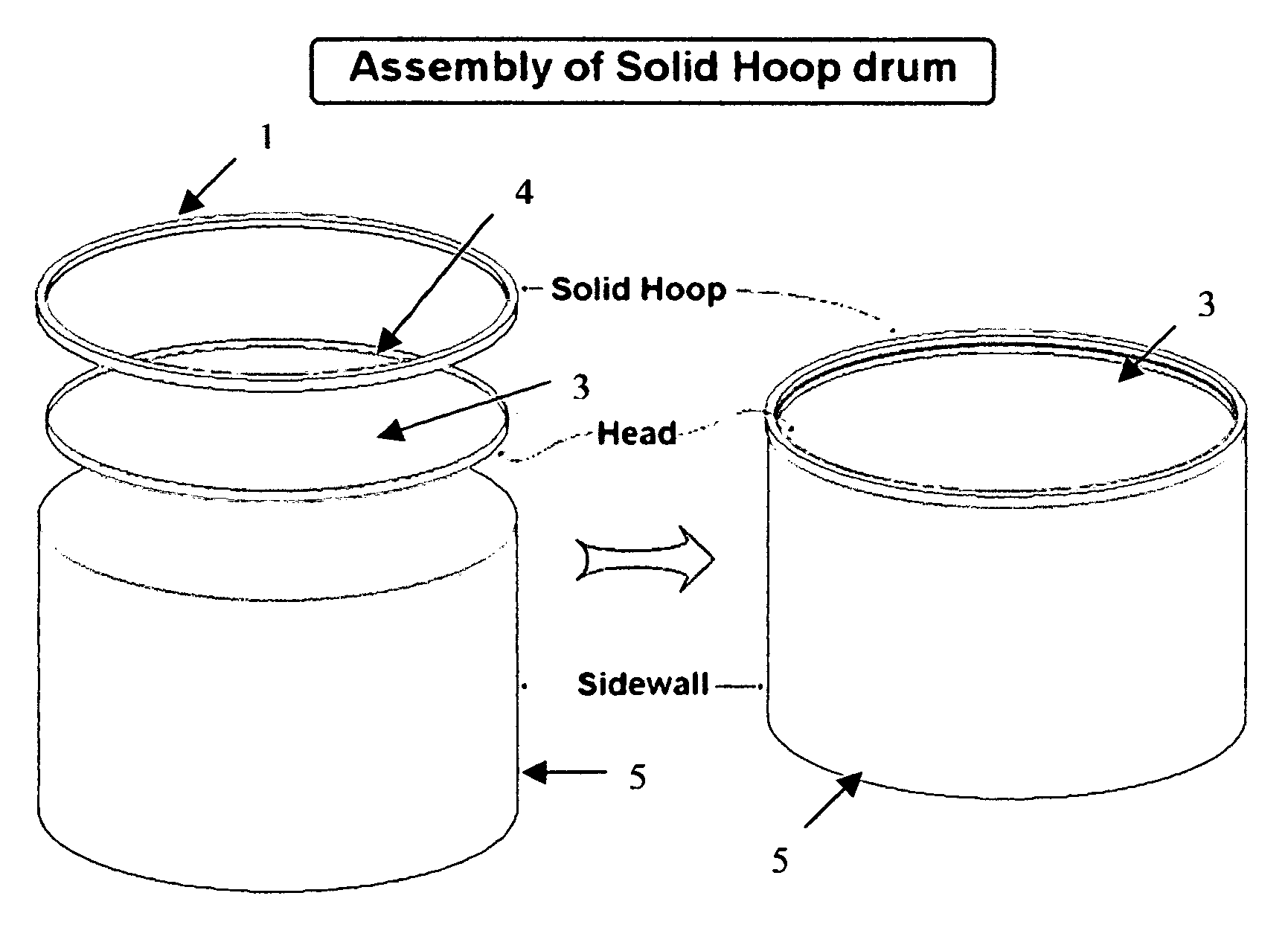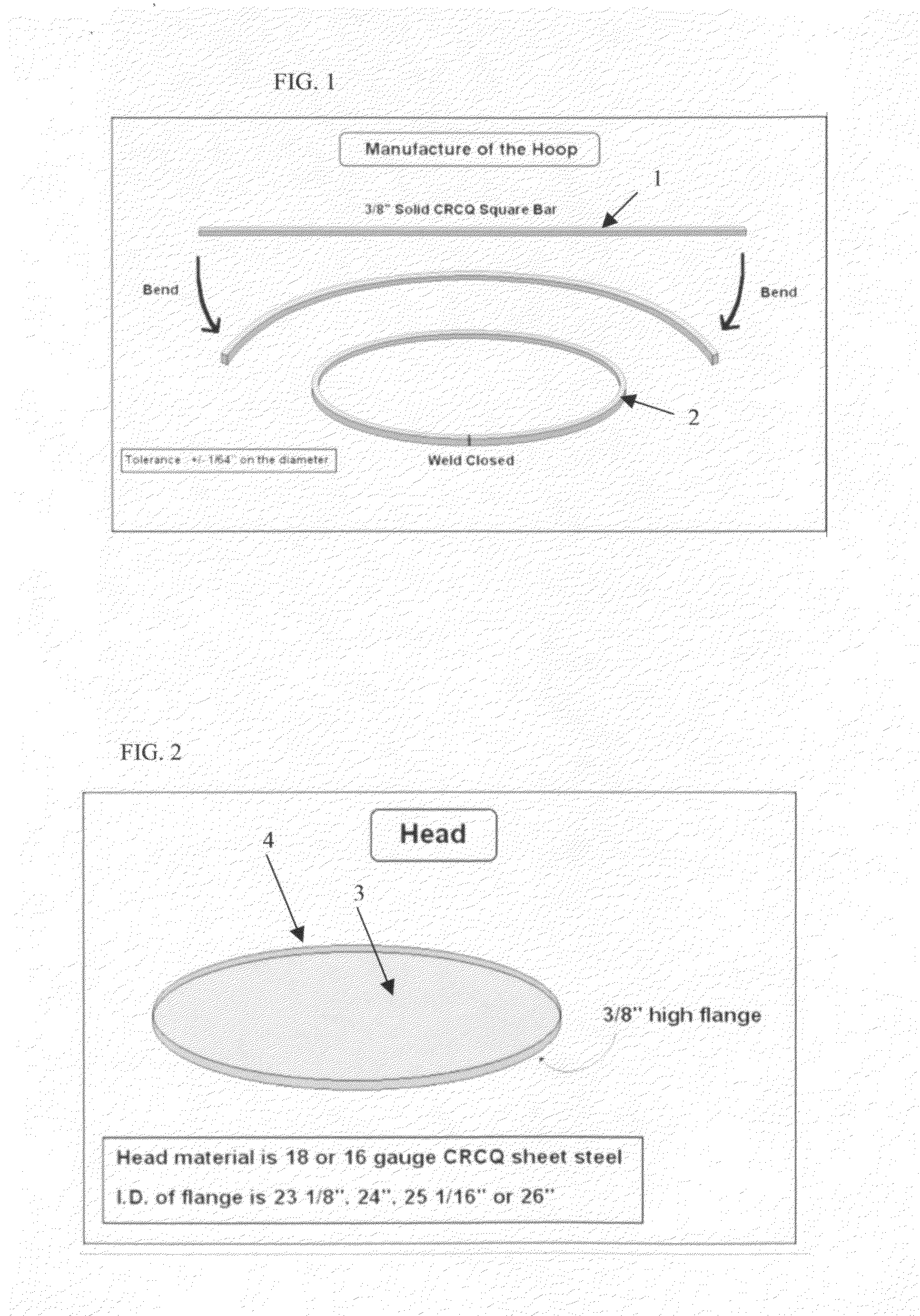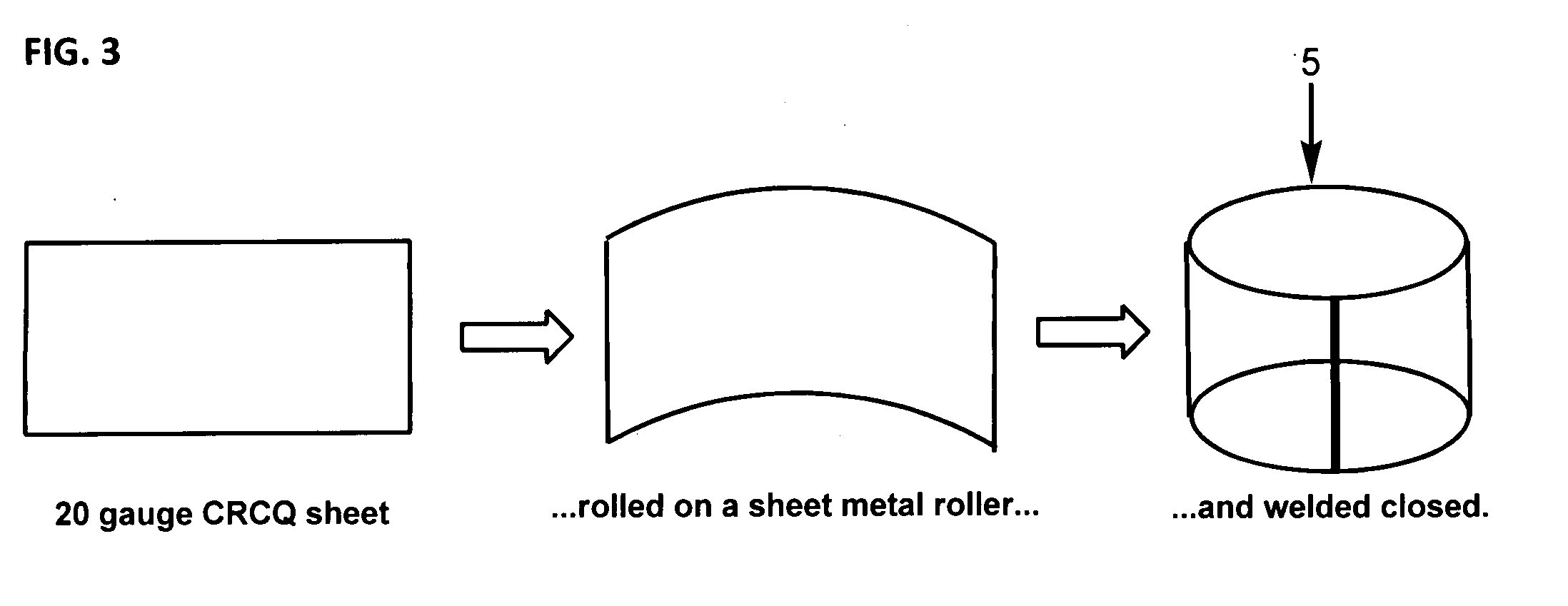Pan musical instruments and methods for making same
a musical instrument and pan technology, applied in the field of pan musical instruments and methods of making same, can solve the problems of increasing the amount of time required to produce a pan instrument, not being physically possible to achieve success, and the industry's current market demand for such instruments is difficult to meet, so as to achieve the effect of eliminating much of the hand labor required, improving consistency, repeatability and quality
- Summary
- Abstract
- Description
- Claims
- Application Information
AI Technical Summary
Benefits of technology
Problems solved by technology
Method used
Image
Examples
example 1
One Piece Powder Coated Jumbie Jam™ Beginner's Pan
[0073]The following process produced a 15.75″ diameter Pan comprising eight note facets with a 2.5″ skirt length, an example of which is shown in FIG. 10. This particular pan is of the one piece construction referred to above. The skirt and head were continuously formed from one piece of material. The eight notes are G4, A4, B4, C5, D5, E5, F#5, and G5. The numerals following the pitch letter refer to the octave of that pitch. The eight note facets are in the shape of a pseudo ellipse (a sphere intersecting a plane), G4 being the largest and G5 being the smallest. They are arranged starting at six o'clock going clockwise around the circumference of the bowl in the following manner: G4, B4, D5, A4, C5, E5 with the F#5 and G5 near the center of the bowl.
[0074]The process begins with a 0.034×22×22 inch square of cold rolled steel containing approximately 0.09% carbon, 0.011% or less sulfur, and a hardness rating of RB 52 or higher. The ...
example 2
Welded Solid Hoop Chrome Plated Lead Pan
[0075]The following process produces a 26.75″ diameter pan containing twenty nine note facets with a 6.5″ skirt length, an example of which is shown in FIG. 5. This particular pan is a three piece construction as described above. The skirt and head are continuously welded to the edge of a ⅜×⅜ inch square rod of steel bent into a circular hoop. The twenty nine notes are C4, C#4, D4, Eb4, E4, F4, F#4, G4, G#4, A4, Bb4, B4, C5, C#5, D5, Eb5, E5, F5, F#5, G5, G#5, A5, Bb5, B5, C6, C#6 D6, Eb6, and E6. The twenty nine note facets are in the shape of a pseudo ellipse (a sphere intersecting a plane), C4 being the largest and E6 being the smallest. They are arranged in three circles around the circumference of the bowl. These three rings of notes are referred to as rim notes, middle ring of notes, and interior notes. The rim notes starting at six o'clock going clockwise are C4, F4, Bb4, Eb4, G#4, C#4, F#4, B4, E4, A4, D4, and G4. The middle ring of no...
example 3
Crimped Painted Double Second Two Pan Set
[0077]The following process produces a set of two 26.75″ diameter pans containing sixteen note facets each (for a total of thirty two note facets for the two drum instrument), an example of which is shown in FIG. 6, each with a 10.5″ skirt length. This particular Pan is a two piece construction. The skirt and head are crimped together. The thirty two notes are F3, F#3, G3, G#3, A3, Bb3, B3, C4, C#4, D4, Eb4, E4, F4, F#4, G4, G#4, A4, Bb4, B4, C5, C#5, D5, Eb5, E5, F5, F#5, G5, G#5, A5, Bb5, B5, and C6. The larger note facets, from F3 to D5, are in the shape of a pseudo ellipse (a sphere intersecting a plane), F3 being the largest and D5 being the smallest. The smaller interior note facets from Eb5-C6 are circular. The complete range of notes is split onto two drums with two rings of notes and two notes next to each other in the center of each drum. These two rings of notes are referred to as rim notes and middle ring of notes. The two notes n...
PUM
 Login to View More
Login to View More Abstract
Description
Claims
Application Information
 Login to View More
Login to View More - R&D
- Intellectual Property
- Life Sciences
- Materials
- Tech Scout
- Unparalleled Data Quality
- Higher Quality Content
- 60% Fewer Hallucinations
Browse by: Latest US Patents, China's latest patents, Technical Efficacy Thesaurus, Application Domain, Technology Topic, Popular Technical Reports.
© 2025 PatSnap. All rights reserved.Legal|Privacy policy|Modern Slavery Act Transparency Statement|Sitemap|About US| Contact US: help@patsnap.com



